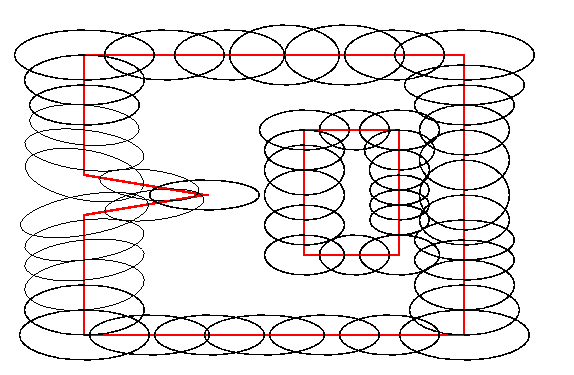Biting Ellipses to generate Anisotropic Meshes
XiangYang Li, ShangHua Teng and Alper Üngör

Abstract:
In numerical simulation where the underlying function is strongly directional, it is desirable to use a mesh that is adaptive both in size and in shape. In such simulation, a metric tensor is used to quantify the ideal size and direction locally at each point in the domain, which in turn defines the local stretching and size of the triangles or quadrilaterals of the mesh. Given a metric tensor, the anisotropic meshing problem is to construct a good quality mesh satisfying the metric tensor. We present a new anisotropic meshing method which is called the ellipse biting method. Our algorithm uses the framework of advancing front to generate a close to optimal packing of ellipses. We then use the p-Delaunay triangulation of the vertex set to generate the final mesh. Because it generates an ellipse packing that respects the underlying control spacing, this new method produce a high quality mesh whose element size and directionality conform well locally to the given input. As part of this work, we introduces a set of operations includrng scaling, intersection, and union on ten.sor metrics. Then operations are used to formally define distance among metrics and to extend Lipschitz condition and the notion of well-shaped meshes from isotropic metrics to anisotropic metrics.

 Alper Ungor
(ungor@cs.uiuc.edu)
May 30 2001
Alper Ungor
(ungor@cs.uiuc.edu)
May 30 2001